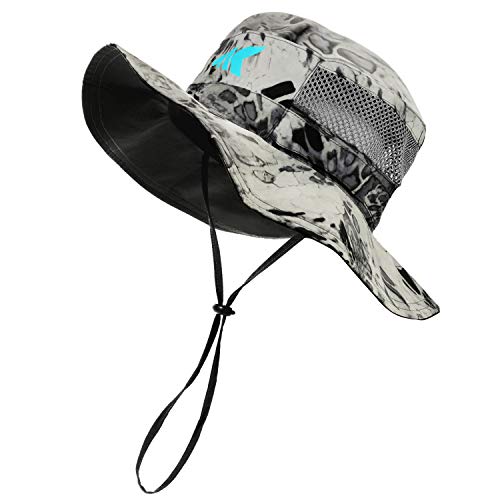Brook Trout Fishing Guide: Techniques, Tips, and Insights
Brook Trout Fishing Guide
Brook trout (Salvelinus fontinalis) are a highly sought-after species among anglers due to their striking appearance and the challenge they present. Found primarily in cold, clear freshwater streams and lakes, brook trout are native to eastern North America but have been introduced to many other parts of the world. Their habitat preferences make them a prime target for fly fishermen and conventional anglers alike.
Identifying Brook Trout
Brook trout are easily recognized by their distinctive appearance:
- Coloration: They typically exhibit a dark green to brown color with a marbled pattern on their backs and upper sides. Their bellies are usually white or yellowish.
- Markings: They have red spots with blue halos scattered along their sides.
- Fins: Their lower fins are orange with white leading edges.
Best Locations for Brook Trout Fishing
Ideal Habitats
Brook trout thrive in cold, oxygen-rich waters. Key environments include:
- Headwater Streams: Pristine, cool streams with plenty of cover and structure.
- Spring-fed Ponds: These ponds maintain cooler temperatures ideal for brook trout.
- Mountain Lakes: High-altitude lakes with clear, cold water are perfect for brook trout.
Top Brook Trout Fishing Destinations
- Appalachian Mountains: Known for its extensive brook trout streams.
- Great Lakes Tributaries: Provide excellent fishing opportunities in both the U.S. and Canada.
- Western U.S.: States like Montana and Colorado have productive brook trout fisheries.
Essential Gear for Brook Trout Fishing
Fishing Rods and Reels
- Fly Fishing Rods: A 3 to 5-weight rod is perfect for brook trout, providing the necessary finesse.
- Spinning Rods: A light or ultralight spinning rod, around 6 feet long, is ideal for casting small lures and baits.
Lines and Leaders
- Fly Lines: Use a floating line with a 9-foot tapered leader.
- Spinning Lines: A 4 to 6-pound test monofilament or fluorocarbon line works well.
Recommended Lures and Flies
- Dry Flies: Popular choices include the Adams, Elk Hair Caddis, and Royal Wulff.
- Nymphs: Pheasant Tail, Hare’s Ear, and Prince Nymphs are effective.
- Spinners: Small, colorful spinners like the Panther Martin or Mepps Aglia attract brook trout.
- Soft Plastics: Tiny jigs or worms mimic natural prey.
Techniques for Catching Brook Trout
Fly Fishing Techniques
- Dry Fly Fishing: Cast upstream and let the fly drift naturally over likely holding spots.
- Nymphing: Use an indicator and present the nymphs just above the stream bed.
- Streamers: Retrieve streamers with short, sharp strips to imitate baitfish.
Spinning Techniques
- Casting Spinners: Cast across and slightly upstream, retrieve with a steady speed.
- Drifting Bait: Drift live bait or artificial bait through pools and runs.
- Jigging: Use small jigs to target brook trout in deeper waters or near structures.
Seasonal Considerations
Spring
- Behavior: Brook trout are actively feeding after the winter thaw.
- Best Practices: Focus on shallow streams and pond inlets where the water is warmer.
Summer
- Behavior: Brook trout seek out cooler, deeper waters.
- Best Practices: Fish early in the morning or late in the evening in deeper pools.
Fall
- Behavior: Brook trout prepare for spawning, becoming more aggressive.
- Best Practices: Use brightly colored flies and lures to provoke strikes.
Winter
- Behavior: Brook trout remain active but are less aggressive.
- Best Practices: Target deeper, slower-moving water with small, subtle presentations.
Conservation and Ethical Fishing Practices
Catch and Release
- Importance: Helps maintain healthy brook trout populations.
- Best Practices: Use barbless hooks, handle fish with wet hands, and release them quickly.
Habitat Protection
- Water Quality: Avoid polluting streams and lakes.
- Habitat Preservation: Support conservation efforts and respect spawning grounds.
Frequently Asked Questions
What is the best time of day to fish for brook trout?
Early morning and late evening are prime times as brook trout are more active during these periods.
What is the typical size of a brook trout?
Brook trout commonly range from 6 to 12 inches, but can grow larger in optimal conditions.
Can brook trout be caught year-round?
Yes, brook trout can be caught year-round, though techniques and locations may vary with the seasons.
Conclusion
Brook trout fishing offers a rewarding experience for anglers of all skill levels. By understanding their habitats, using the right gear, and employing effective techniques, you can enhance your chances of success. Remember to practice ethical fishing to ensure these beautiful fish remain abundant for future generations.

































